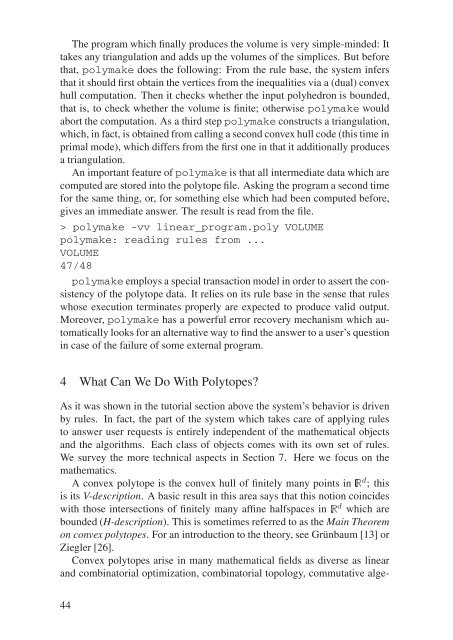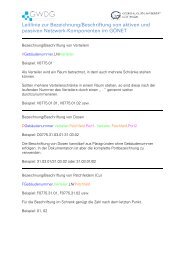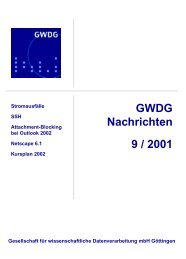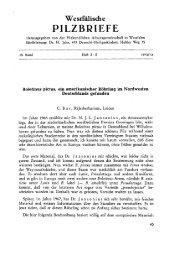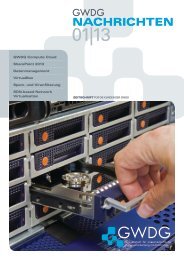Forschung und wissenschaftliches Rechnen - Beiträge zum - GWDG
Forschung und wissenschaftliches Rechnen - Beiträge zum - GWDG
Forschung und wissenschaftliches Rechnen - Beiträge zum - GWDG
Erfolgreiche ePaper selbst erstellen
Machen Sie aus Ihren PDF Publikationen ein blätterbares Flipbook mit unserer einzigartigen Google optimierten e-Paper Software.
The program which finally produces the volume is very simple-minded: It<br />
takes any triangulation and adds up the volumes of the simplices. But before<br />
that, polymake does the following: From the rule base, the system infers<br />
that it should first obtain the vertices from the inequalities via a (dual) convex<br />
hull computation. Then it checks whether the input polyhedron is bo<strong>und</strong>ed,<br />
that is, to check whether the volume is finite; otherwise polymake would<br />
abort the computation. As a third step polymake constructs a triangulation,<br />
which, in fact, is obtained from calling a second convex hull code (this time in<br />
primal mode), which differs from the first one in that it additionally produces<br />
a triangulation.<br />
An important feature of polymake is that all intermediate data which are<br />
computed are stored into the polytope file. Asking the program a second time<br />
for the same thing, or, for something else which had been computed before,<br />
gives an immediate answer. The result is read from the file.<br />
> polymake -vv linear_program.poly VOLUME<br />
polymake: reading rules from ...<br />
VOLUME<br />
47/48<br />
polymake employs a special transaction model in order to assert the consistency<br />
of the polytope data. It relies on its rule base in the sense that rules<br />
whose execution terminates properly are expected to produce valid output.<br />
Moreover, polymake has a powerful error recovery mechanism which automatically<br />
looks for an alternative way to find the answer to a user’s question<br />
in case of the failure of some external program.<br />
4 What Can We Do With Polytopes?<br />
As it was shown in the tutorial section above the system’s behavior is driven<br />
by rules. In fact, the part of the system which takes care of applying rules<br />
to answer user requests is entirely independent of the mathematical objects<br />
and the algorithms. Each class of objects comes with its own set of rules.<br />
We survey the more technical aspects in Section 7. Here we focus on the<br />
mathematics.<br />
A convex polytope is the convex hull of finitely many points in Ê d ;this<br />
is its V-description. A basic result in this area says that this notion coincides<br />
with those intersections of finitely many affine halfspaces in Ê d which are<br />
bo<strong>und</strong>ed (H-description). This is sometimes referred to as the Main Theorem<br />
on convex polytopes. For an introduction to the theory, see Grünbaum [13] or<br />
Ziegler [26].<br />
Convex polytopes arise in many mathematical fields as diverse as linear<br />
and combinatorial optimization, combinatorial topology, commutative alge-<br />
44


